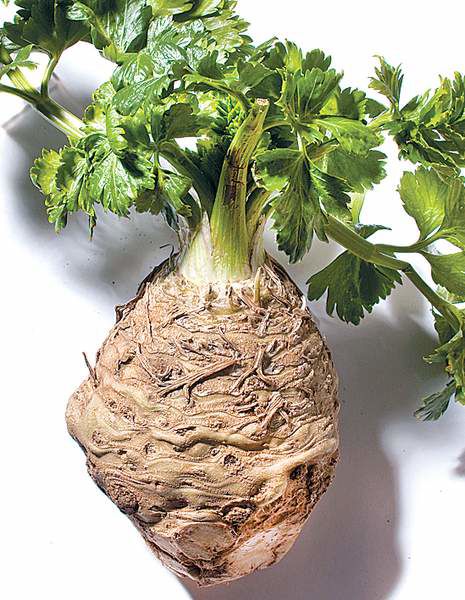Cooks, meet celeriac, and don’t be scared
Published 4:00 am Tuesday, February 8, 2011

- Celeriac, or celery root, has long been a staple in the winter in Europe and is beginning to catch on in America.
Gnarly, pocked and bulbous, celeriac’s looks could kill appetites.
The root vegetable sprouts a Muppet-like shock of bright green stalks that wave pleasantly enough from a mound of soil. The tuber that lies just beneath, however, looks like a candidate for surgical-strength nose-hair trimmers.
Even clean-shaven, its ivory flesh hardly screams “Bite me!” — except in the sardonic sense.
Which would partly explain why American cooks regard celeriac suspiciously, despite its long tradition in the Old World as both an aphrodisiac and a winter staple.
Also called celery root, knob celery or turnip-rooted celery, celeriac is best known in the slawlike French classic celeri remoulade, cut into matchsticks, blanched in lemon juice, then dressed with mayonnaise and mustard or creme fraiche.
Its flavor is reminiscent of parsley and celery. Its texture, however, resembles potato, without the starch.
Moving from France, Beatrice Peltre shopped in vain for celeriac her first year in the United States in 1995.
“My mother made it as a salad at least once or twice a week, and she always added it to the broth in pot-au-feu, a very old dish of boiled beef, with onion, carrots, leek and potatoes,” said Peltre, whose award-winning blog La Tartine Gourmande has engendered a cookbook, out this fall.
Scottish-born celebrity chef and international restaurateur Gordon Ramsay also has praised celeriac’s nutty note in soups, stews, curries and gratins.
Celeriac is, bit by bit, gaining ground in the U.S.
Jack Staub, whose vegetable and herb gardens at Hortulus Farm in Wrightstown, Pa., have been featured in many publications, deemed celeriac worthy of his book “75 Exciting Vegetables for Your Garden.”
He describes celeriac as a cousin to anise, carrots, parsley and parsnips.
“I love the taste of celeriac, even though you can tell it’s a vegetable oddity — a troll-like bundle of roots about sums it up,” he said. “But all you have to do is cut off that exterior and you’ve got a lovely white, turniplike substance inside.
“I’m crazy about mashing it with potatoes and some cream and butter and all the bad things that go with the potatoes. And adding truffle oil is superb. I also like roasting it with turnips and carrots and some fennel.”
Half a cup of celeriac contains about 30 calories, no cholesterol or fat, and provides dietary fiber, Staub said. Like other root vegetables, celeriac can be stored for weeks, even months, if kept cool and dry, making it a winter workhorse.
Peltre happily finds it in Boston now, not only at seasonal farmers markets but also supermarkets.
“One of the first times I bought it in a more common place, the people asked me, ‘What do you do with this thing?’” she said.
Where to begin? she thought: soups, salad, roasted, French-fried, in gratin dauphinois (combined with thin slices of potatoes, milk, cream and nutmeg — “no need of cheese,” she insists).
But proper handling requires some skill.
“You have to cut it in half, and sometimes it has a spongy texture in the middle that you have to remove,” Peltre said.
“If you have a mandoline to slice the vegetable, it makes the job much easier. It wouldn’t slice as easily as potatoes because it’s much firmer.”
She has even mashed it with vanilla, added fresh pomegranate seeds and drizzled pomegranate molasses on the side, which makes for two aphrodisiacs in one dish.
Valentine’s dinner, anyone?






